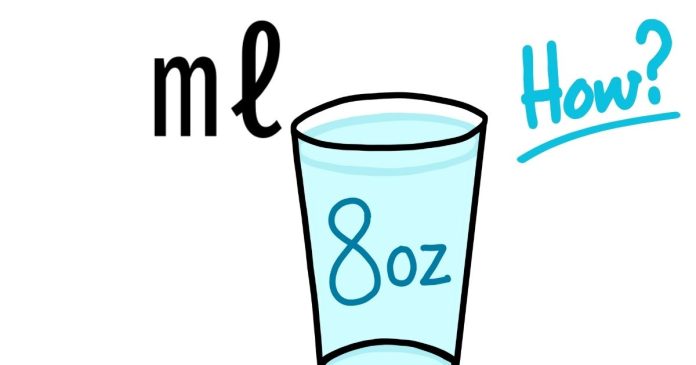When it comes to measuring liquids, understanding the conversion between ounces and milliliters can be incredibly helpful. Whether you’re following a recipe, mixing a drink, or working on a scientific project, knowing the exact conversion can save you time and effort. So, how many milliliters are there in 8 ounces? Let’s break it down.
First, it’s important to note that there are two types of ounces commonly used: fluid ounces (fl oz) in the United States and imperial fluid ounces in the United Kingdom. Additionally, milliliters (ml) are a metric unit of volume used worldwide.
1. U.S. Fluid Ounces to Milliliters
The U.S. fluid ounce is commonly used in recipes and measuring liquids in the United States. One U.S. fluid ounce is equivalent to approximately 29.5735 milliliters.
To convert 8 U.S. fluid ounces to milliliters, use the following formula:
Plugging in the values:
So, 8 U.S. fluid ounces is approximately 236.59 milliliters.
2. Imperial Fluid Ounces to Milliliters
The imperial fluid ounce, used in the UK and some Commonwealth countries, is slightly larger than the U.S. fluid ounce. One imperial fluid ounce is equal to exactly 28.4131 milliliters.
Using the same formula:
Thus, 8 imperial fluid ounces is approximately 227.31 milliliters.
Why the Difference?
The difference arises because the U.S. and imperial systems are based on different definitions of volume. The U.S. system is derived from the wine gallon, whereas the imperial system originates from the ale gallon. These historical differences result in slightly varying measurements.
Quick Conversion Tips
- For U.S. fluid ounces: Multiply by 29.5735.
- For imperial fluid ounces: Multiply by 28.4131.
- Use online converters or kitchen scales with metric settings for greater convenience.
In summary, 8 ounces can mean different things depending on the measurement system:
- 8 U.S. fluid ounces = 236.59 milliliters
- 8 Imperial fluid ounces = 227.31 milliliters
Being aware of these differences ensures precision in your tasks, whether you’re in the kitchen, lab, or just curious about measurements. Now that you know the conversion, you’re equipped to handle any situation that requires it.



